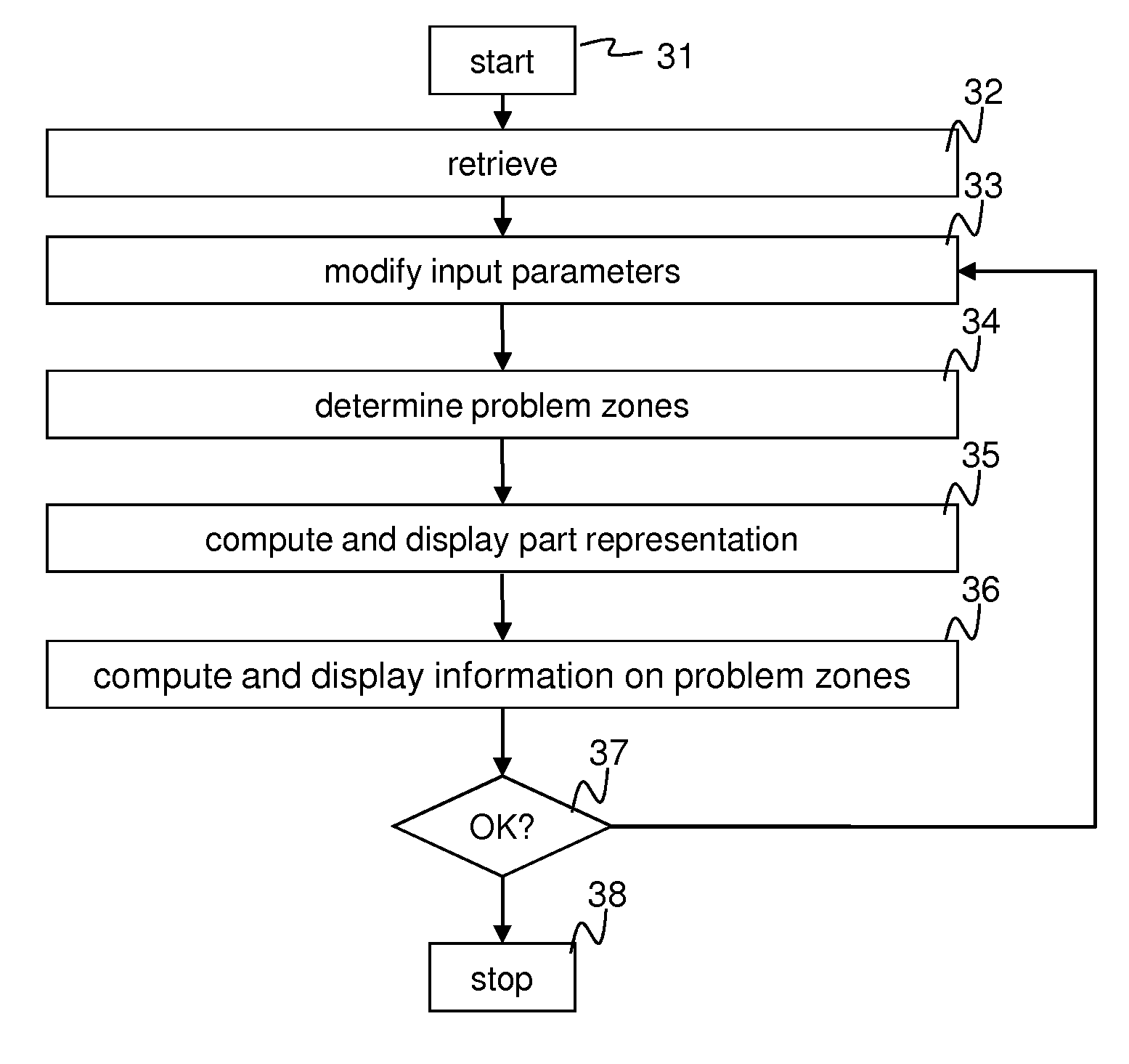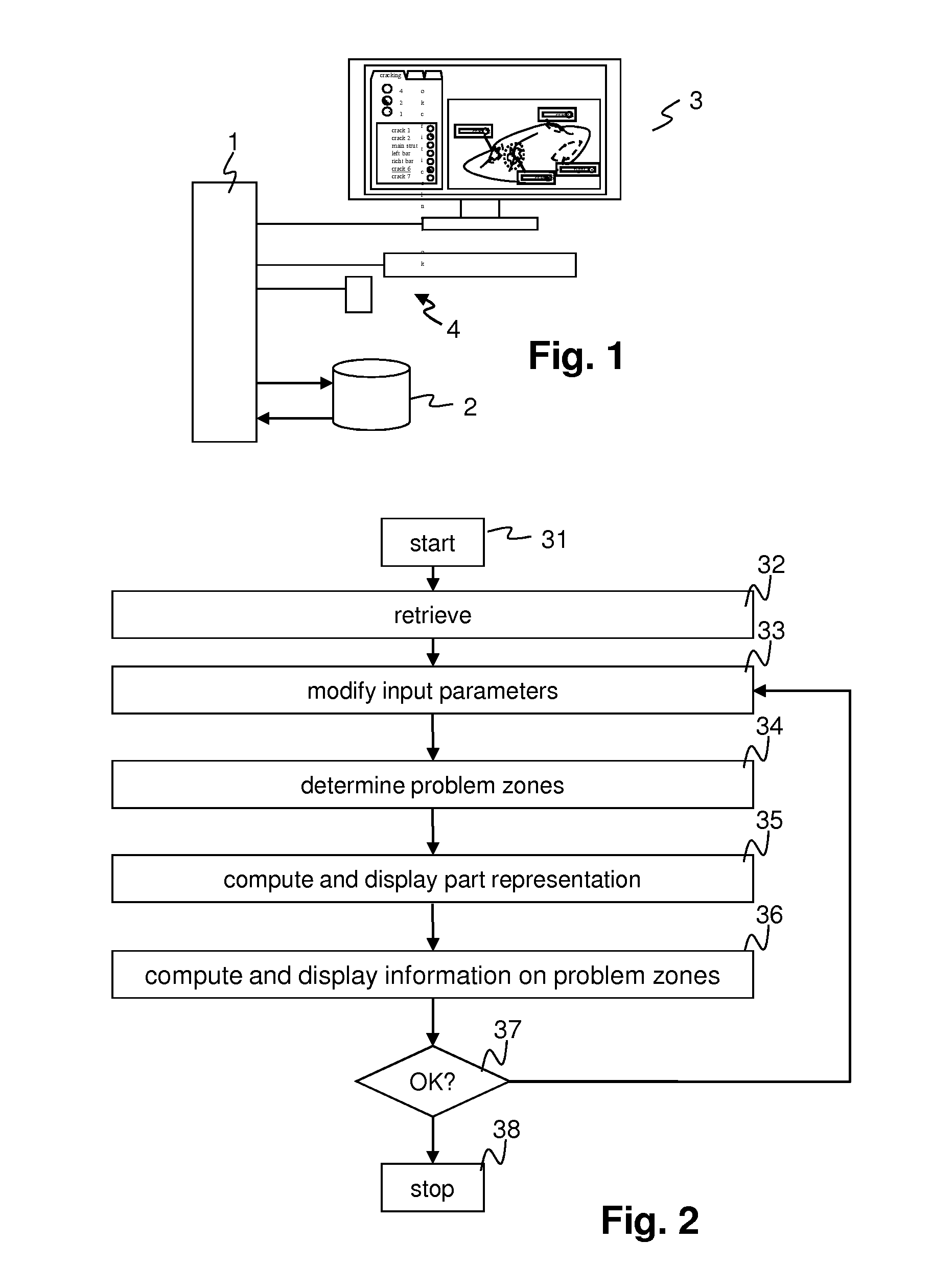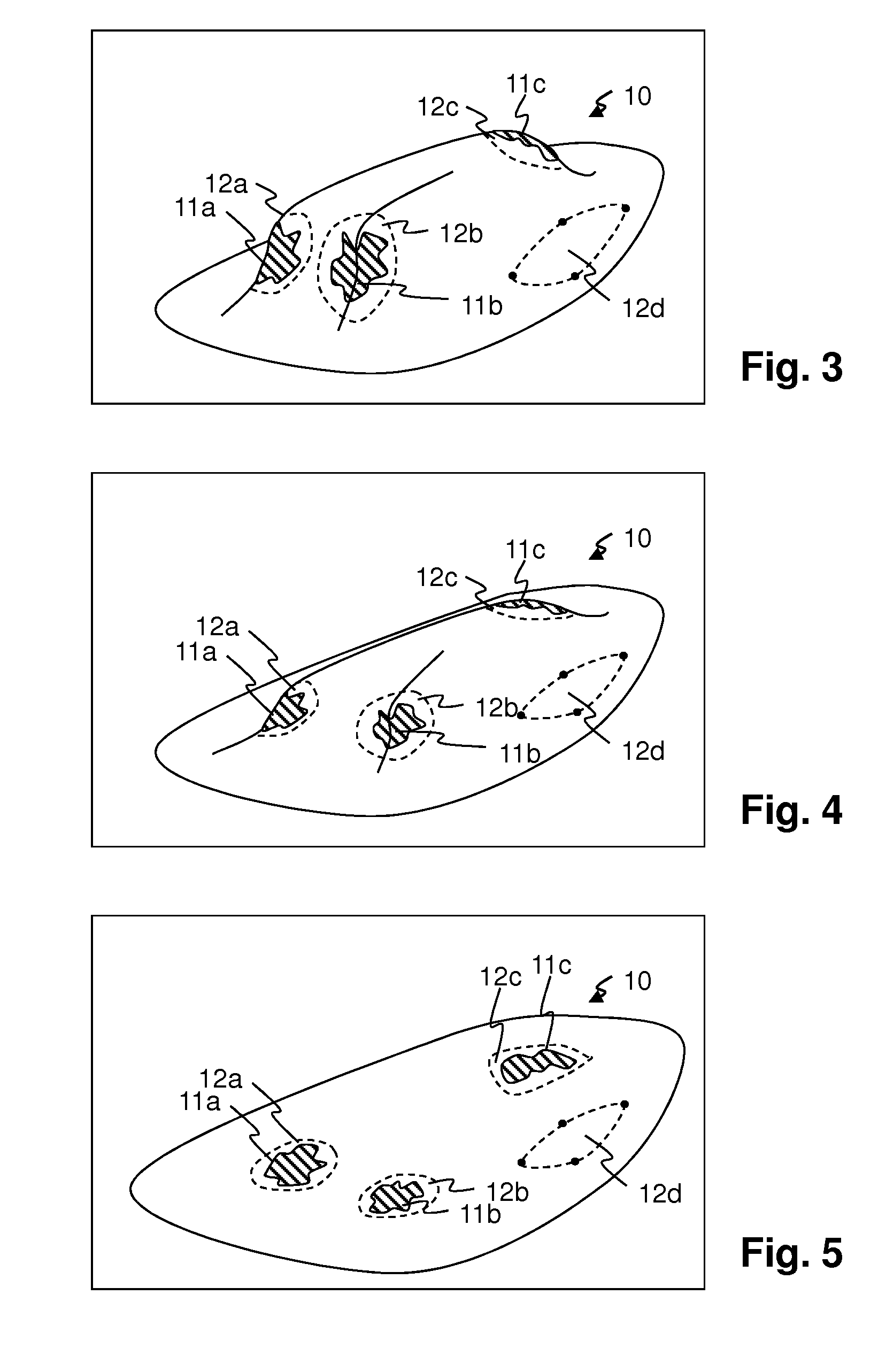Method and computing system for designing a sheet-metal-forming process
a technology of sheet metal and design system, applied in the direction of cad techniques, total factory control, instruments, etc., can solve the problems of material stretching too much, cracks or tears, surface lows or grooves, etc., and achieve the effect of not being stretched sufficiently
- Summary
- Abstract
- Description
- Claims
- Application Information
AI Technical Summary
Benefits of technology
Problems solved by technology
Method used
Image
Examples
Embodiment Construction
Terms Used
[0076]Formed part: For the sake of brevity, the terms “formed part” or simply “part” shall be used instead of “formed sheet-metal part” throughout the present application.
Parameters: Parameters may be of the following types:[0077]simulation parameters: may include nominal parameters plus parameters defining a stochastic variation around the nominal parameters. They may be controllable and noncontrollable (disturbances). They comprise[0078]process parameters of the process being simulated; and[0079]geometry of tools and / or parts; and[0080]material parameters of the material being formed.[0081]control parameters (of numerical simulation).[0082]analysis parameters for post-simulation analysis.
Input parameters: Input parameters are the inputs to the design process, that is, on the one hand, the simulation parameters and on the other hand a model of the geometry of the part, that is, either a target geometry after the forming process, or an intermediate geometry, resp. the tool...
PUM
| Property | Measurement | Unit |
|---|---|---|
| shape | aaaaa | aaaaa |
| thickness | aaaaa | aaaaa |
| elastic properties | aaaaa | aaaaa |
Abstract
Description
Claims
Application Information
 Login to View More
Login to View More - R&D
- Intellectual Property
- Life Sciences
- Materials
- Tech Scout
- Unparalleled Data Quality
- Higher Quality Content
- 60% Fewer Hallucinations
Browse by: Latest US Patents, China's latest patents, Technical Efficacy Thesaurus, Application Domain, Technology Topic, Popular Technical Reports.
© 2025 PatSnap. All rights reserved.Legal|Privacy policy|Modern Slavery Act Transparency Statement|Sitemap|About US| Contact US: help@patsnap.com



